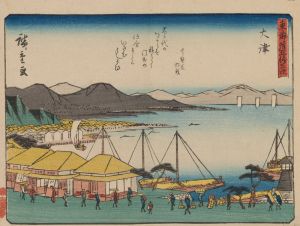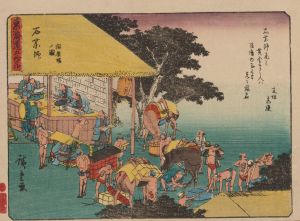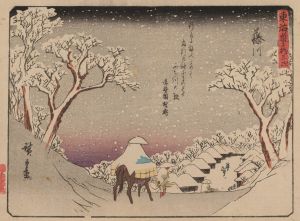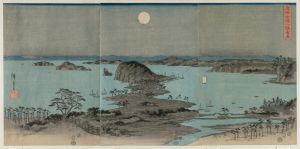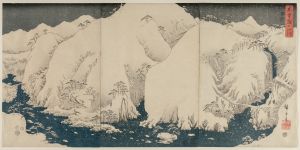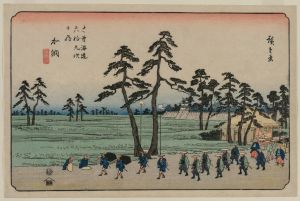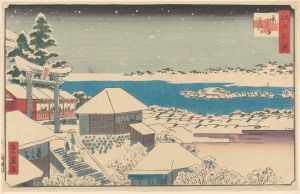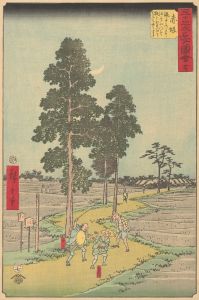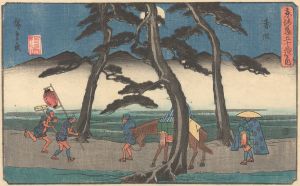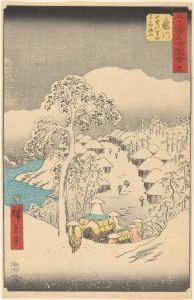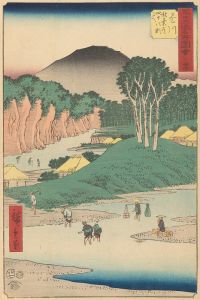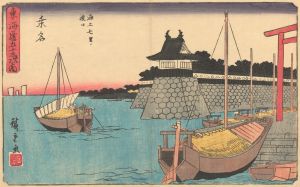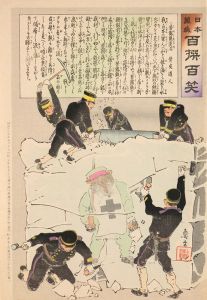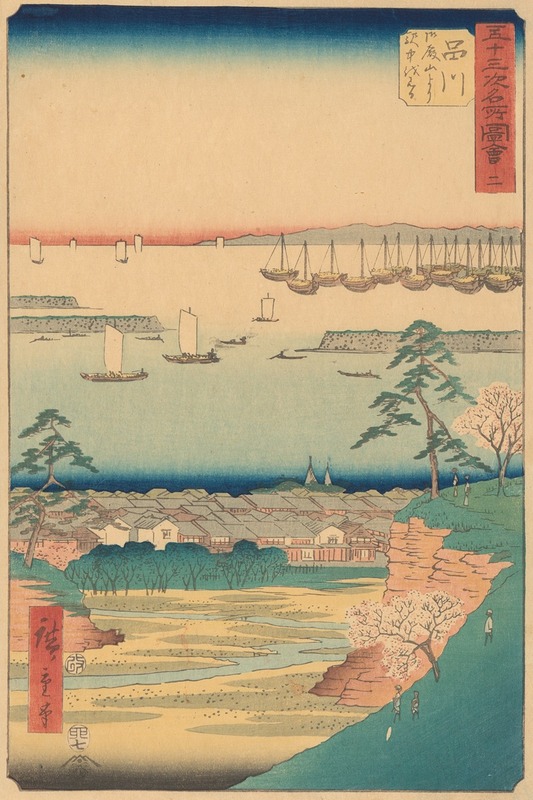
Shinagawa
A hand-painted replica of Andō Hiroshige’s masterpiece Shinagawa, meticulously crafted by professional artists to capture the true essence of the original. Each piece is created with museum-quality canvas and rare mineral pigments, carefully painted by experienced artists with delicate brushstrokes and rich, layered colors to perfectly recreate the texture of the original artwork. Unlike machine-printed reproductions, this hand-painted version brings the painting to life, infused with the artist’s emotions and skill in every stroke. Whether for personal collection or home decoration, it instantly elevates the artistic atmosphere of any space.
Shinagawa by Andō Hiroshige is a celebrated woodblock print that forms part of the renowned series "The Fifty-three Stations of the Tōkaidō" (Tōkaidō Gojūsan-tsugi), created during the Edo period in Japan. Hiroshige, a master of the ukiyo-e genre, produced this series following his journey along the Tōkaidō road, which was the main travel and transport artery of Japan, connecting Edo (modern-day Tokyo) to Kyoto. This series, published in the 1830s, is one of Hiroshige's most famous works and played a significant role in popularizing the ukiyo-e style both in Japan and abroad.
The print "Shinagawa" depicts the first station on the Tōkaidō road, located just outside of Edo. Shinagawa was a bustling post town and a popular departure point for travelers heading westward. In Hiroshige's depiction, the scene captures the vibrancy and activity of the area, showcasing a lively view of travelers and locals going about their daily routines. The composition is characterized by its dynamic use of perspective and vivid colors, typical of Hiroshige's style, which often emphasized the beauty of landscapes and the human interactions within them.
Hiroshige's work is known for its attention to detail and ability to convey the atmosphere of a place. In "Shinagawa," he skillfully uses the natural elements, such as the sky and water, to create a sense of movement and life. The print features a variety of figures, including travelers, merchants, and local residents, each engaged in different activities, which adds to the narrative quality of the scene. The presence of Mount Fuji in the background is a recurring motif in Hiroshige's work, symbolizing both the physical and cultural landscape of Japan.
The "Fifty-three Stations of the Tōkaidō" series was highly influential and contributed to the popularity of landscape prints in the ukiyo-e tradition. Hiroshige's ability to capture the essence of each station along the Tōkaidō road provided viewers with a visual journey through Japan's diverse regions. His work not only served as a form of artistic expression but also as a historical record of the Edo period's travel culture and the socio-economic conditions of the time.
Hiroshige's prints, including "Shinagawa," were widely collected and admired in both Japan and Europe. They played a significant role in the Japonisme movement, influencing Western artists such as Vincent van Gogh and Claude Monet, who were inspired by Hiroshige's use of color, composition, and perspective. The enduring appeal of Hiroshige's work lies in its ability to transcend cultural and temporal boundaries, offering a glimpse into the beauty and complexity of 19th-century Japan.
Today, "Shinagawa" and the other prints from "The Fifty-three Stations of the Tōkaidō" series are considered masterpieces of Japanese art. They are preserved in museums and collections worldwide, continuing to captivate audiences with their exquisite detail and timeless charm. Hiroshige's legacy as one of Japan's greatest ukiyo-e artists remains firmly established, and his work continues to be celebrated for its artistic innovation and cultural significance.





